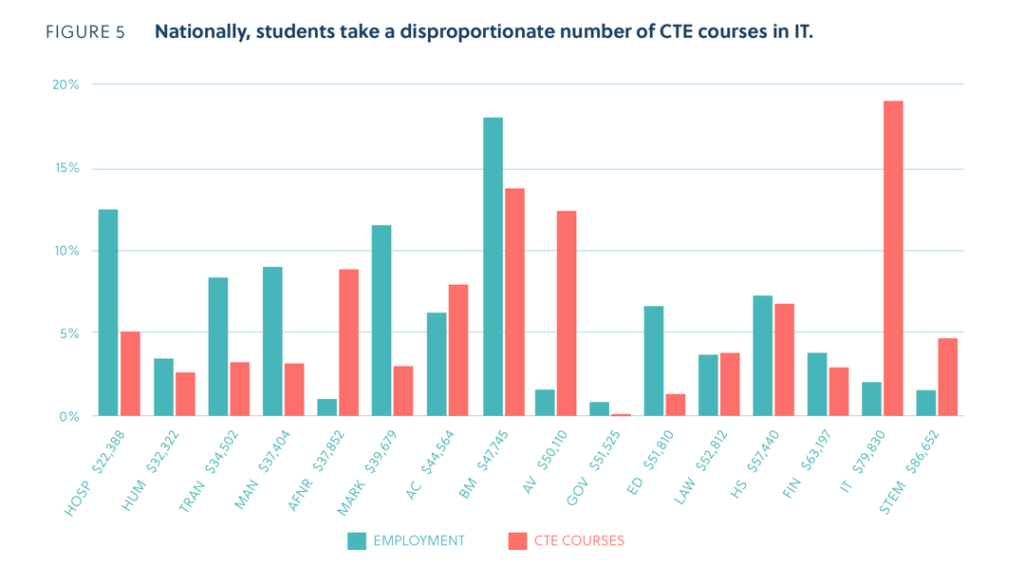

June 7, 2019
 Career and technical education, or CTE, has been highlighted as a pathway for high school students who might not choose a four-year college or university after graduation. According to the Association for Career & Technical Education, 94 percent of high school students take at least one CTE course in one of 16 Career Clusters, including:
Career and technical education, or CTE, has been highlighted as a pathway for high school students who might not choose a four-year college or university after graduation. According to the Association for Career & Technical Education, 94 percent of high school students take at least one CTE course in one of 16 Career Clusters, including:

With such a high percentage of students involved in CTE, one must ask: are these programs preparing students for high-demand jobs?
Cameron Sublett, Pepperdine University Associate Professor, and David Griffith, Fordham Institute Senior Research and Policy Associate, asked this question as well. Their recent report, “How Aligned is Career and Technical Education to Local Labor Markets?,” looked at three main research questions:
With help from the High School Longitudinal Survey (HSLS) and the Bureau of Labor Statistics (BLS), the Fordham Institute gathered data regarding CTE course-taking and employment and wages. To connect these data sources, 459 occupations in the BLS classification system were assigned to one of the 16 CTE career clusters. This allowed for a calculation of employment shares and average wages for each cluster to compare the distribution of course-taking to the distribution of jobs.
Learn more from our key takeaways below and the full webinar recording, which was led by David.
Key Takeaways | How Aligned is Career and Technical Education to Local Labor Markets?

Watch the webinar
Save the date for our next Intersection Webinar: June 19, 2019 at 1 p.m. ET. We will be joined by Rebecca Planchard, Senior Early Childhood Policy Advisor, NC Department of Health and Human Services and Mandy Ableidinger, Policy and Practice Leader, NC Early Childhood Foundation. Rebecca and Mandy will highlight the value of collaboration between state agencies and the public in strengthening the creation of the North Carolina Early Childhood Action Plan. They will discuss how they integrated the public into the development process and provide an overview of the Early Childhood Action Plan. Register now.
See you at The Intersection
